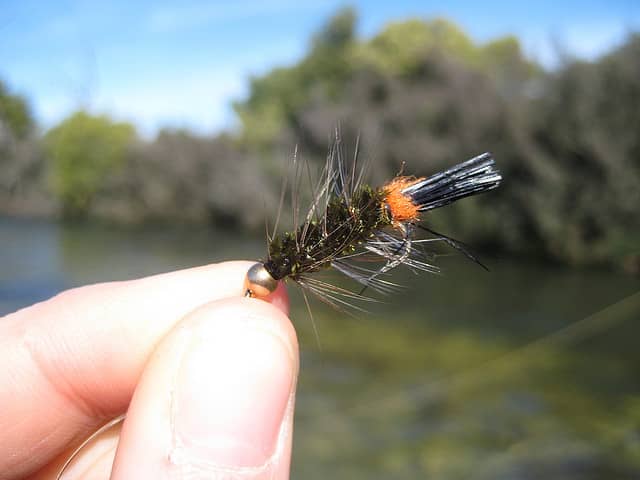The History And Uses Of The Woolly Bugger
Pursue The Outdoors 06.21.11

The Wooly Bugger might be the strangest named fly in all of fly fishing but, in the right hands, it can also be one of the most effective.
The ubiquitous Woolly Bugger, never quite spelled correctly to my eyes, appeals to the eyes of every game fish imaginable. If I had one pattern to fish the rest of my life, no matter what the fish, no matter what the conditions, this would be it. Steelhead, Trout, Salmon, Bass, Shad, Pike, you name it, they will hit this pattern. And the best thing? Usually the fish will be bigger than average, the strikes harder than average, and the action better than average.
The origins of the Woolly Bugger can be traced back to the Old English pattern the Woolly Worm, which is also a very effective pattern. Most credit Russell Blessing with the actual invention of the Woolly Bugger in the early 1970′s in Pennsylvania. Although, Jack Dennis claims it is a variation of the Black Martinez popularized in the West. And still others claim it was originally a Bass imitation developed in the late 1800′s in Missouri. Whatever the origins, the popularity of this pattern cannot be denied.
Besides being used for all game fish, the Bugger’s popularity can also be attributed to its versatility. It can be tied in almost every color imaginable. The most popular colors are black, brown and olive, with purple and white right behind. But almost every color has been tied, and different color combinations are often used on the same fly. Another characteristic that makes the bugger so popular, is that you can’t fish it wrong. Okay, if fish are slurping delicately on #24 Tri-co spinners, you don’t want to plunk a #6 Bugger right in the center of them. But if you are searching sub-surface for any kind of fish, in any kind of water, you could do a lot worse than selecting the woolly bugger.
What fish think they are hitting when they hit a Bugger is somewhat a mystery. To human’s eyes it could be a bait fish, a leech, a grub, a cricket, a stonefly, a dragonfly nymph, a damselfly nymph, the list is endless. And perhaps that is what makes it such a great all-purpose pattern. It is a nymph, a streamer, and an attractor all in one. We’ll let the fish classify it.

